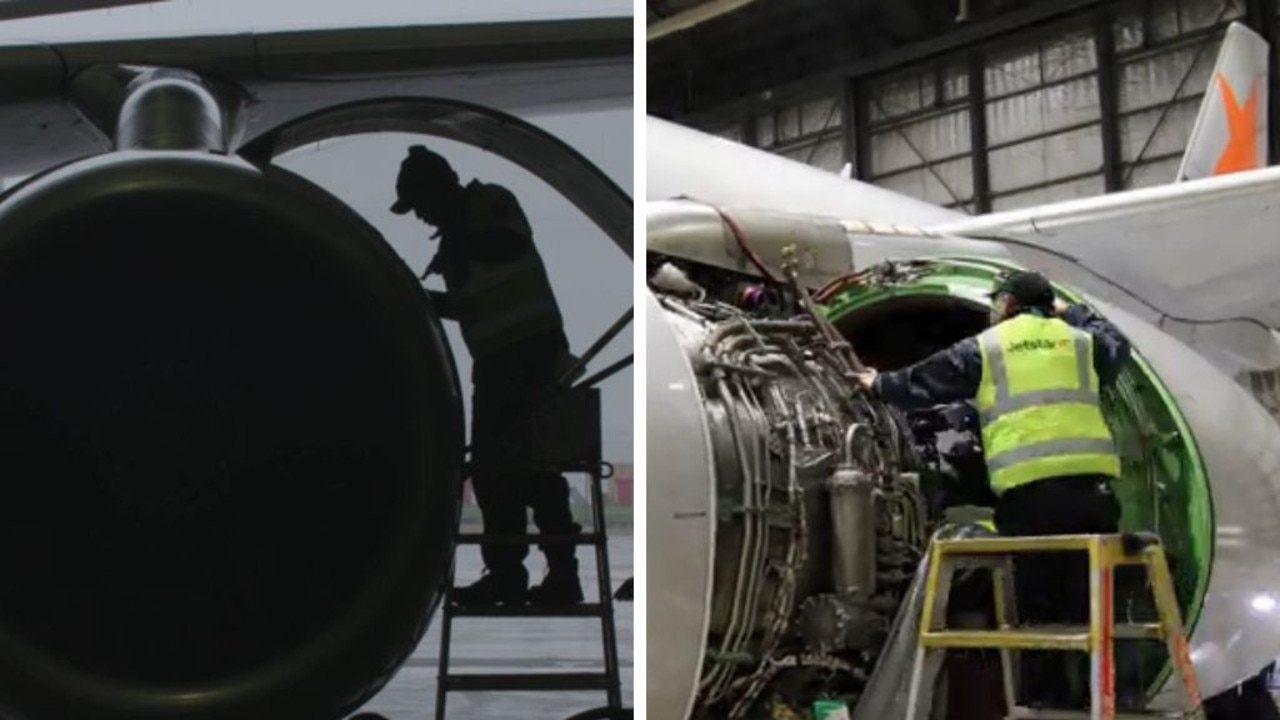Flight attendant on how airlines should approach threat of lithium batteries
THINK of the essentials you pack in your carry-on bag — a lot are electronic, right? But this presents a new danger airlines are struggling to keep up with.

THINK of some of the imperatives you pack when you get ready for a trip. Most of them are likely electronic.
You bring your mobile phone and computer or tablet and along with wireless accessories like a mouse or speaker. Maybe an e-cigarette, if you use one. Perhaps a battery charger as well.
And of course, you’re not alone; there are many battery-powered devices on-board an aircraft at any given time, with multiple devices per person.
In addition, most if not all, flight attendants are now required to carry company-issued PEDs (personal electronic devices), alongside the other devices we also carry with us on the road.
And as airlines scrap screens for entertainment in favour of relying on passengers to supply their own to watch movies and shows via on-board Wi-Fi, we find ourselves encouraged to continue.
It’s not a new story, but international aviation authorities find themselves increasingly concerned about lithium ion battery fires on-board aircraft.
The issue has been on their radar for years, yet aside from outright banning devices such as the Samsung Galaxy Note 7 and hoverboards, both of which had been known to explode in some instances, little headway has been made to mitigate these fears.


The events are becoming more frightening as well as more frequent — this past week, a passenger from Beijing to Melbourne had been wearing wireless headphones when they exploded, causing burns to her face and hands.
And incidents such as mobile phones and other small PEDs getting wedged and crushed in seats — causing them to emit toxic smoke and even catch fire — have prompted some airlines to issue warnings about attempting to retrieve them without assistance from the crew.
And these are just incidents within the cabin. Lithium battery shipments caused the 2010 crash of UPS flight 6 near Dubai, and it is now believed that the missing Malaysia Airlines flight 370 may have been brought down by the same means, as it too was found to be carrying lithium batteries in its cargo hold. Air carriers fought for a ban on the practice and eventually won.
How prepared are airline crews in fighting a lithium battery fire? It all depends on the airline, as different carriers provide different equipment, but on-board firefighting technology has yet to fully catch up with the technology we carry with us.

A debate among friends from different countries and different airlines highlighted a disparity in understanding and approach when it comes to situations like these, which demonstrates the helplessness felt by airlines and their governing agencies on how to prevent future tragedies.
Some airlines have or are planning on adding high-energy fire containment bags, which are built to contain exploding devices and can withstand temperatures up to 1760 degrees Celsius.
But other airlines are somehow reluctant to take them on, which could be due to the high cost of the bags.
I would be shocked if eventually they don’t become a required part of on-board safety equipment. Halon extinguishers have been known to be able to eventually extinguish fires of this type, but it would seem that containing the smouldering fire source rather than have it continue to threaten the integrity of the aircraft would be preferable. A two-pronged approach could be a better one.
I am currently writing this as a passenger on my work-issued tablet in a wireless keyboard case while listening to music on my mobile phone, so I am obviously no proponent of banning electronic devices altogether.
But hearing about more terrifying incidents and understanding the high speed and temperature at which these devices combust, I can’t help but feel we should keep striving for better solutions.
Mine, at the most basic level, is that I’m going to make more of an effort to leave home any battery-powered items I don’t absolutely need during my travels, as unthinkable as that may be.
A little disconnecting certainly couldn’t hurt, anyway, right?
This article originally appeared on FlyerTalk.



